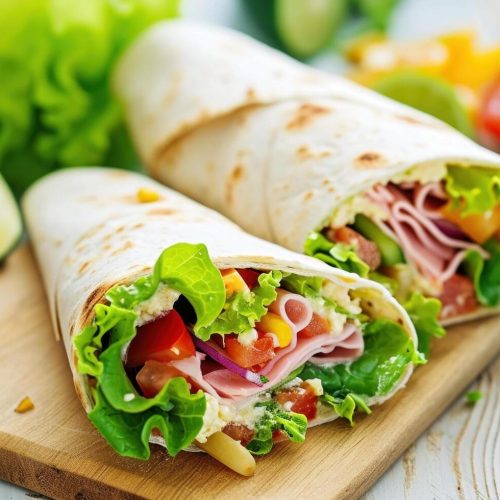Belly fat is one of the most common and stubborn areas of the body to target when trying to lose weight. It’s not just about aesthetics; excess belly fat can be a significant risk factor for various health issues, including heart disease, type 2 diabetes, and certain cancers. Losing belly fat requires a combination of strategies that involve diet, exercise, lifestyle changes, and understanding the science behind fat loss. This guide will walk you through practical steps and tips to help you shed those extra inches around your waist.
Understanding Belly Fat
Before diving into how to lose belly fat, it’s important to understand what it is and why it can be challenging to get rid of. There are two main types of fat that accumulate in the abdominal area:
- Subcutaneous Fat: This is the fat that lies just under the skin. While it can be unsightly, it’s less harmful than visceral fat.
- Visceral Fat: This fat surrounds your internal organs. It’s more dangerous than subcutaneous fat because it’s metabolically active and can lead to serious health problems.
Visceral fat is often associated with a higher risk of cardiovascular diseases and metabolic issues, making it crucial to address not just for appearance but for your overall health.
Dietary Strategies for Losing Belly Fat
Diet plays a crucial role in reducing belly fat. Here are some effective dietary strategies to help you trim your waistline:
- Cut Down on Sugars and Refined Carbs: Sugary foods and drinks, as well as refined carbs like white bread, pasta, and pastries, can lead to an increase in belly fat. These foods cause spikes in blood sugar and insulin levels, promoting fat storage. Replace these with whole grains, fruits, and vegetables, which provide fiber and nutrients without the blood sugar spikes.
- Increase Protein Intake: Protein is essential for fat loss. It boosts metabolism, reduces appetite, and helps maintain muscle mass while losing fat. Incorporate high-quality protein sources like lean meats, fish, eggs, legumes, and dairy into your diet. Aim to include protein in every meal to help control hunger and keep your metabolism active.
- Eat More Fiber: Soluble fiber, in particular, has been shown to reduce belly fat by increasing feelings of fullness and slowing the absorption of calories. Foods high in soluble fiber include oats, flaxseeds, avocados, legumes, and Brussels sprouts. Adding these foods to your diet can help you feel satisfied with fewer calories.
- Limit Alcohol Consumption: Alcohol can contribute to belly fat accumulation, especially when consumed in excess. It’s high in empty calories and can lower your inhibitions, leading to overeating. If you choose to drink, do so in moderation, and opt for lower-calorie options.
- Stay Hydrated: Drinking water is essential for weight loss. It helps regulate your metabolism, flushes out toxins, and can reduce appetite when consumed before meals. Aim for at least 8 glasses of water a day, and consider starting your day with a glass of water to kickstart your metabolism.
- Practice Portion Control: Even when eating healthy foods, it’s important to watch your portion sizes. Eating large portions, even of healthy foods, can lead to excess calorie intake and prevent you from losing belly fat. Pay attention to serving sizes and try using smaller plates to help manage portions.
Exercise for Targeting Belly Fat
Exercise is a critical component of any fat loss plan. Here’s how to incorporate effective workouts to help reduce belly fat:
- Cardiovascular Exercise: Cardio exercises like running, cycling, swimming, or brisk walking are effective at burning calories and reducing overall body fat, including belly fat. Aim for at least 150 minutes of moderate-intensity cardio or 75 minutes of vigorous-intensity cardio per week.
- Strength Training: Building muscle through strength training exercises like weightlifting, bodyweight exercises, or resistance band workouts helps boost your metabolism. Muscle tissue burns more calories at rest than fat tissue, so increasing your muscle mass can help you burn more calories throughout the day.
- High-Intensity Interval Training (HIIT): HIIT workouts involve short bursts of intense exercise followed by rest periods. These workouts are particularly effective for fat loss because they increase calorie burn both during and after the workout. Incorporating HIIT sessions into your routine can help you lose belly fat more quickly.
- Core Exercises: While you can’t spot-reduce fat, strengthening your core muscles can help improve the appearance of your midsection. Incorporate exercises like planks, Russian twists, and bicycle crunches to tone your abdominal muscles. A strong core also supports better posture and can reduce the risk of back pain.
Lifestyle Changes for Long-Term Success
In addition to diet and exercise, certain lifestyle changes can significantly impact your ability to lose belly fat:
- Get Enough Sleep: Sleep is crucial for weight management. Lack of sleep can lead to hormonal imbalances that increase hunger and cravings, particularly for unhealthy foods. Aim for 7-9 hours of quality sleep per night to support your weight loss goals.
- Manage Stress: Chronic stress triggers the release of cortisol, a hormone that promotes fat storage, especially in the abdominal area. Practicing stress management techniques such as meditation, deep breathing, yoga, or spending time in nature can help reduce cortisol levels and prevent stress-related weight gain.
- Avoid Crash Diets: Extreme calorie restriction can lead to muscle loss, a slower metabolism, and eventual weight regain. Focus on making sustainable changes to your diet and lifestyle that you can maintain in the long term.
- Be Consistent: Consistency is key to losing belly fat. It’s not about perfection, but about making healthier choices most of the time. Stick to your diet and exercise plan, even when progress seems slow, and avoid the temptation to resort to quick fixes.
- Monitor Your Progress: Keep track of your diet, exercise, and weight loss progress. This can help you stay motivated and identify any areas where you might need to make adjustments. Use a journal, app, or other tracking tools to monitor your journey.
The Importance of Patience and Persistence
Losing belly fat takes time and effort. It’s important to be patient and persistent, as changes won’t happen overnight. Focus on making gradual improvements to your diet, exercise routine, and lifestyle. Remember that the goal is not just to lose weight, but to improve your overall health and well-being.
Avoid falling into the trap of fad diets or extreme exercise programs that promise quick results. Sustainable weight loss comes from consistent, healthy habits. Celebrate your progress along the way, and don’t get discouraged by setbacks. Every small step you take brings you closer to your goal.
Conclusion
Losing belly fat is achievable with the right combination of diet, exercise, and lifestyle changes. By focusing on whole, nutrient-dense foods, incorporating regular physical activity, managing stress, and getting enough sleep, you can reduce belly fat and improve your overall health. Remember that consistency and patience are key to achieving long-lasting results. With dedication and a balanced approach, you can reach your goals and enjoy a healthier, leaner midsection.
Tags: Lose Belly Fat, Weight Loss, Healthy Eating, Exercise Tips, Belly Fat Reduction, Core Strength, HIIT Workouts, Portion Control, Stress Management, Healthy Lifestyle





